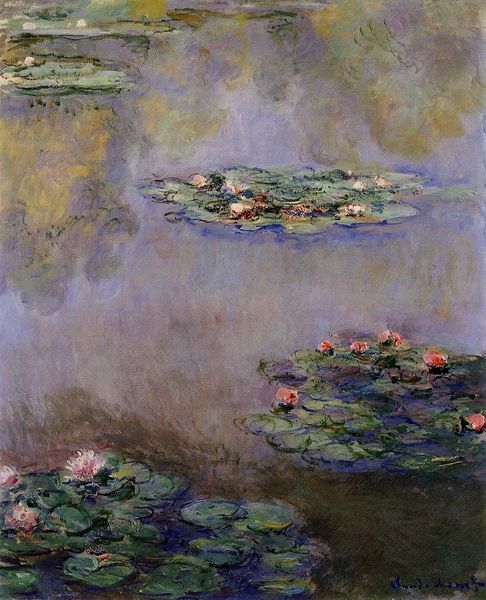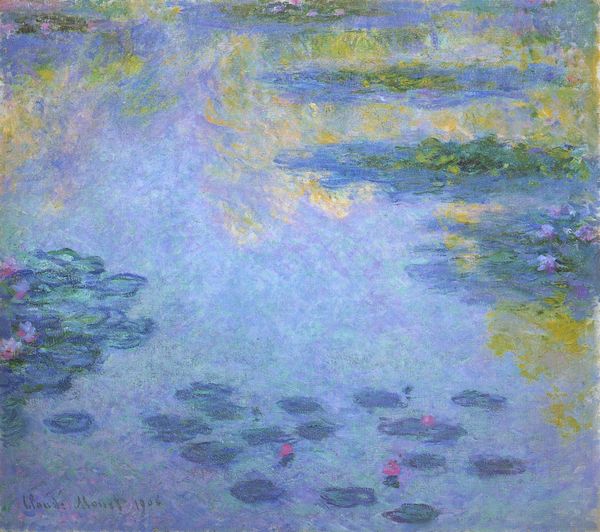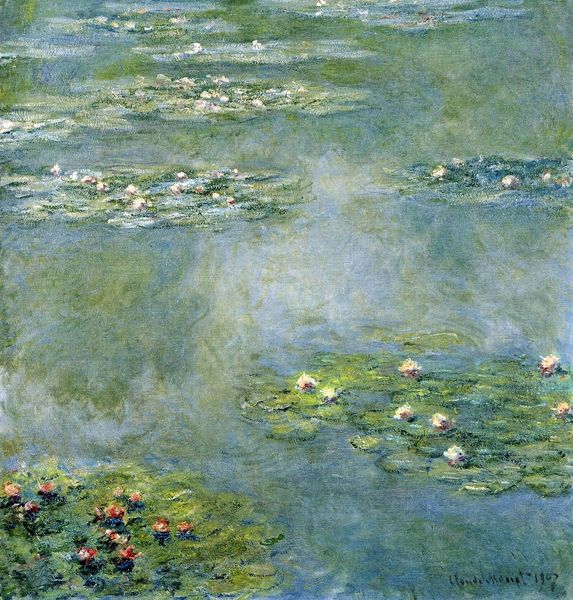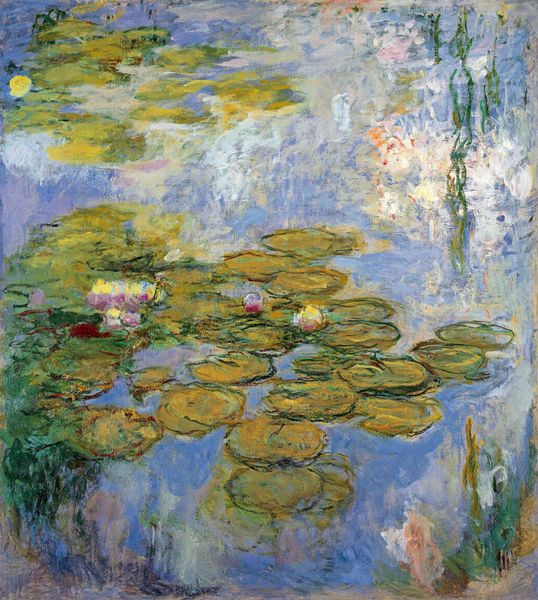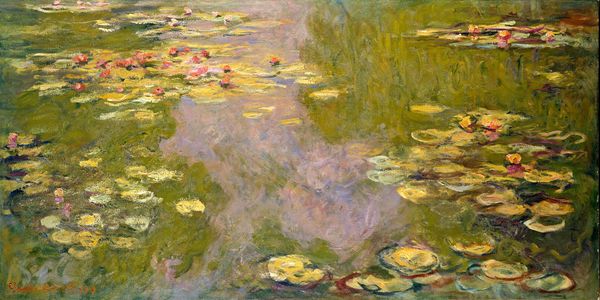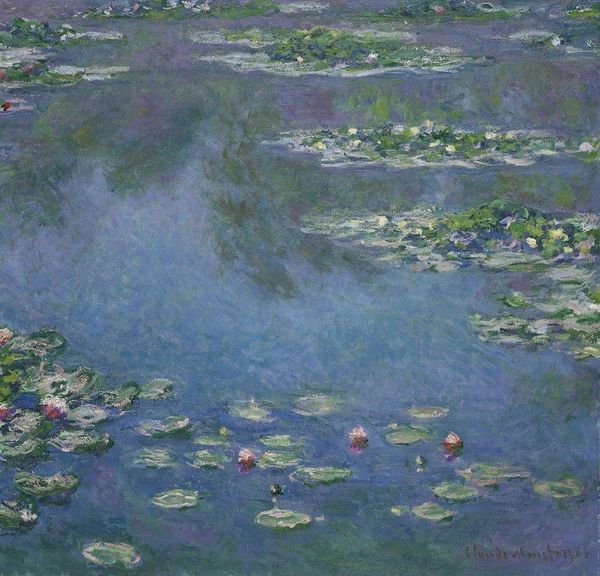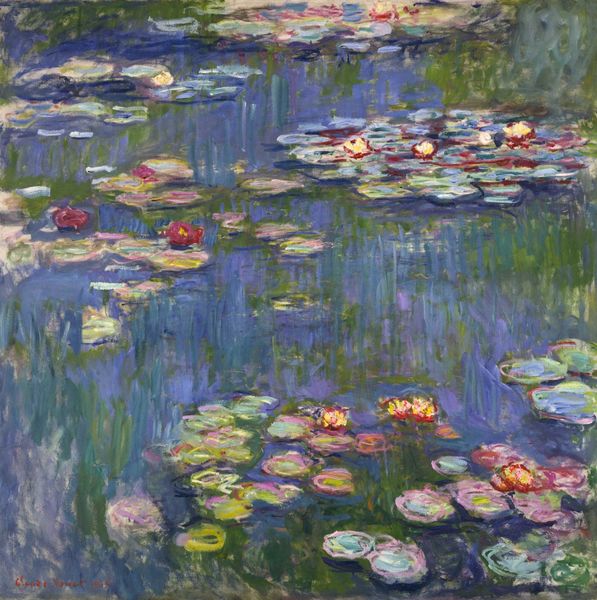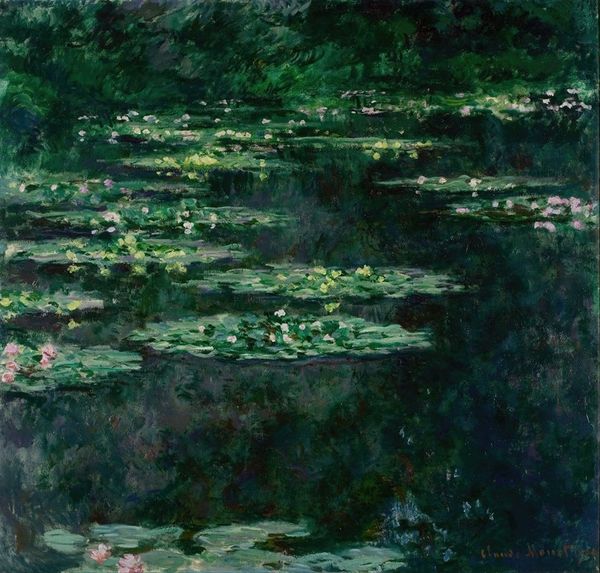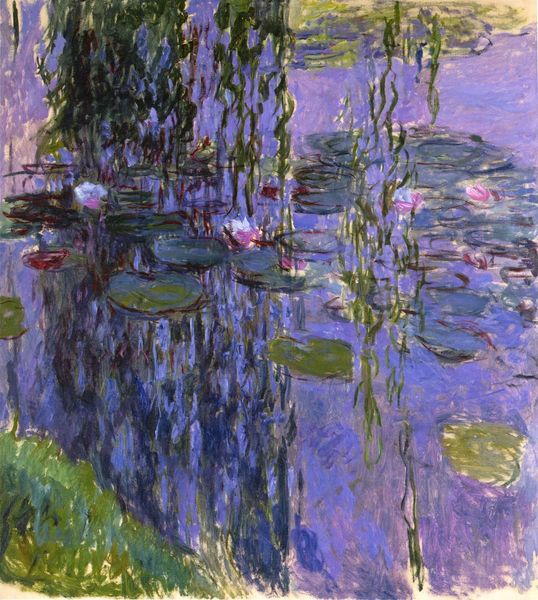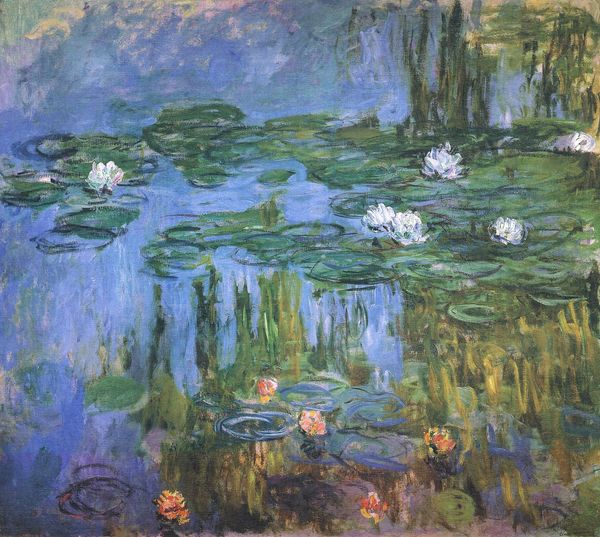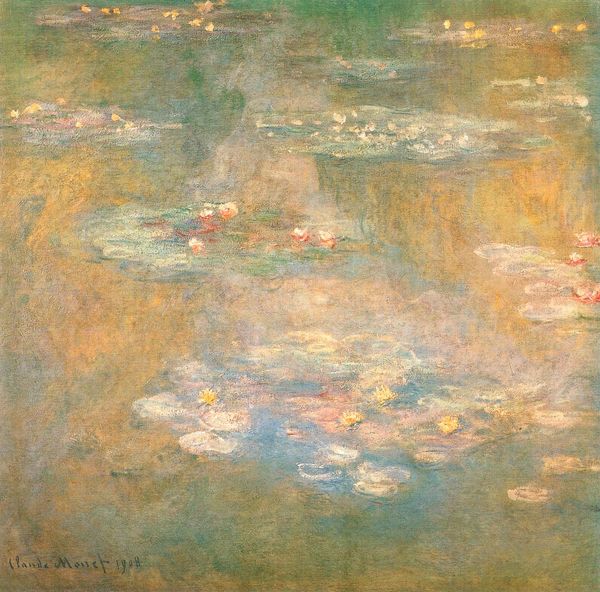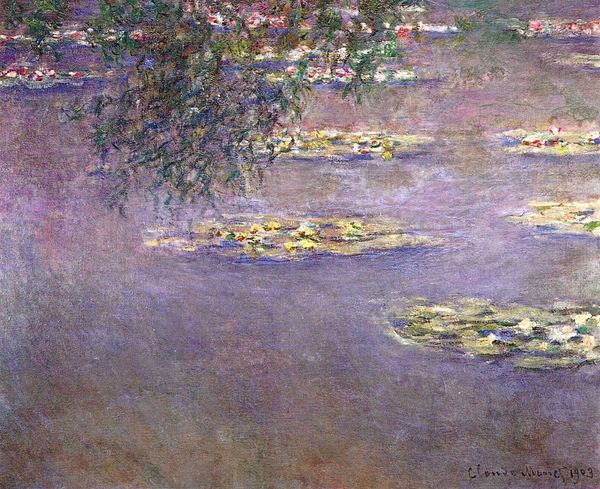
Copyright: Public domain
Curator: This is Claude Monet's "Water Lilies," painted around 1905. Monet's focus during this period turned increasingly towards his garden at Giverny. Editor: It strikes me immediately as a tranquil surface. The broad strokes of blues and greens suggest a meditative space. Curator: Monet's Impressionistic technique truly shines here. Notice the impasto, the thick application of oil paint creating texture and capturing the fleeting effects of light on the water’s surface. How might this garden represent not just an escape but a political statement about his views in contrast with the societal conflicts of his time? Editor: The broken brushwork indeed conveys the shimmering and dissolving forms so typical of Impressionism. Focusing on how light models the forms, this semiotic technique transforms nature into subjective impressions. He moved away from realistic detail, emphasizing instead pure optical sensations. Curator: And what sensations! Considering his later life was plagued by cataracts, limiting his color perception, do you read the subtle shift in palettes here to carry weight regarding how vision and perception are socially constructed? Editor: Possibly! The absence of a traditional focal point and horizon line compels a different kind of visual analysis, pushing our focus towards color interactions and compositional balance instead. Curator: It serves, then, as a testament to Monet's dedication to capturing ephemeral moments and transforming personal struggles into something enduring. I often reflect upon how artists choose particular lenses in order to confront injustice within the parameters available. Editor: Ultimately, one admires Monet's ability to distill visual experience into its purest form through his meticulous investigation of light and color, which provides us with more than a representation—an echo—of natural perception.
Comments
No comments
Be the first to comment and join the conversation on the ultimate creative platform.
